Polygonal masonry
Polygonal masonry is a technique of stone wall construction. True polygonal masonry is a technique wherein the visible surfaces of the stones are dressed with straight sides or joints, giving the block the appearance of a polygon.[1]
This technique is found throughout the world and sometimes corresponds to the less technical category of Cyclopean masonry.[2]
Armenia
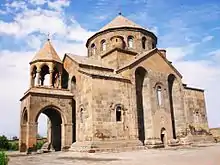
Bolivia
Brazil
Bulgaria
Easter Island
Ecuador
Germany
Hungary
Iran
Italy
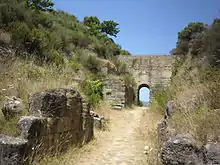
In Italy, polygonal masonry is particularly indicative of the region of Latium, but it occurs also in Etruria, Lucania, Samnium, and Umbria; scholars including Giuseppe Lugli have carried out studies of the technique.[3][4] Some notable sites that have fortification walls built in this technique include Norba, Signia, Alatri, Boiano, Circeo, Cosa, Alba Fucens, Palestrina, and Terracina.[5] The Porta Rosa of the ancient city of Velia employs a variant of the technique known as Lesbian masonry.[1]
Japan
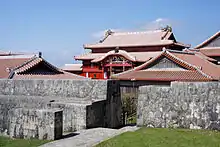
Mexico
Morocco
Peru
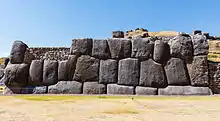
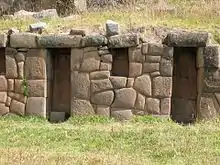
Philippines
Portugal
Romania
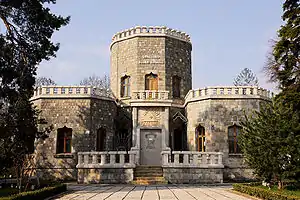
Sudan
Syria
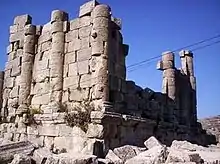
- Arwad
- Hosn Suleiman Baitokaike
- Bara
- Barad
- Barjaka
- Basufan
- Bauda
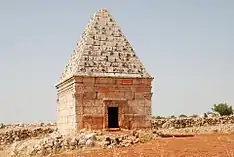
- Benastur Monastery
- Church of Saint Simeon Stylites
- Churches of Sheikh Suleiman village
- Cyrrhus
- Dana
- Deir Qeita
- Jarada
- Kharab Shams Basilica

- Mount Simeon
- Mushabbak Basilica
- Refade
- Serjilla
- Qalb Loze
- Qatura
Thailand
Turkey
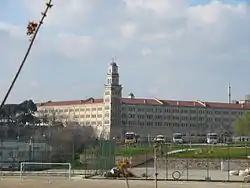
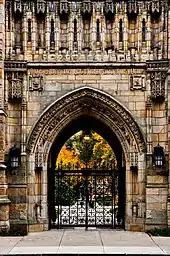
United Kingdom
United States
References
- G.R.H. Wright (23 November 2009). Ancient Building Technology, Volume 3: Construction (2 Vols). BRILL. pp. 154–. ISBN 90-04-17745-0.
- Carmelo G. Malacrino (2010). Constructing the Ancient World: Architectural Techniques of the Greeks and Romans. Getty Publications. pp. 97–. ISBN 978-1-60606-016-2.
- Frank, T. 1924. "Roman buildings of the Republic: an attempt to date them from their materials." MAAR 3.
- Giuseppe Lugli (1957). La Tecnica Edilizia Romana Con Particolare Riguardo a Roma E Lazio: Testo. 1. Johnson Reprint.
- Jeffrey Alan Becker (2007). The Building Blocks of Empire: Civic Architecture, Central Italy, and the Roman Middle Republic. ProQuest. pp. 109–. ISBN 978-0-549-55847-7.
- P. Gros. 1996. L'architecture romaine: du début du IIIe siècle av. J.-C. à la fin du Haut-Empire. 2 v. Paris: Picard.
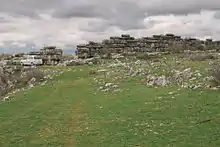
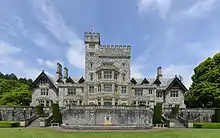

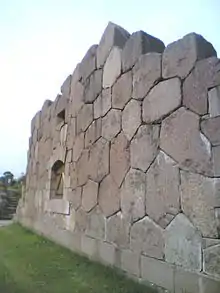
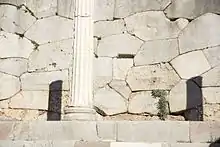

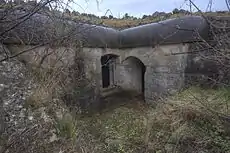
.jpg.webp)